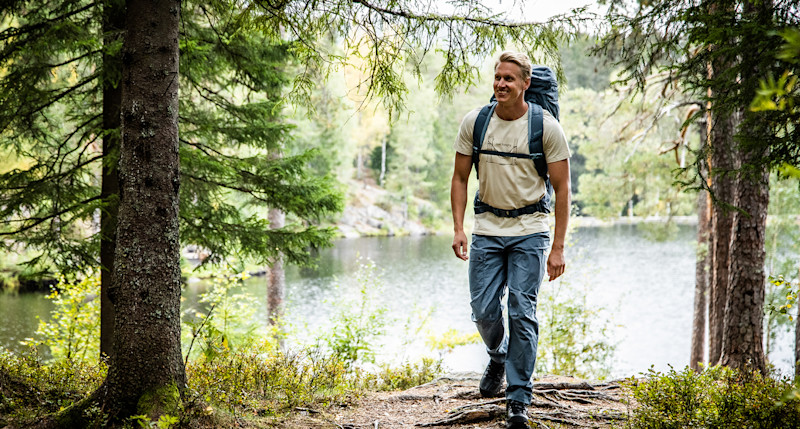
Which backpack should I go for?
In order for you and your backpack to become one, it is wise to think a little about when and what you should have the backpack for. Finding a model that works for absolutely everything is difficult, almost impossible, but on the other hand, it is not very difficult to find the optimal backpack for your adventure, everyday life as well as leisure.
What to consider when choosing a backpack
- Start from what you will primarily use your backpack for to find a volume that suits the purpose.
- Think about the features and details that are important to you. Maybe you need a backpack with a hip belt, one with a bottom compartment for your sleeping bag, or a waterproof backpack.
- There are backpacks specially adapted for women that are slightly shorter in back length and have a carrying system that is shaped according to the female body shapes.
- If you are going to have a light pack, the weight of the backpack is important.
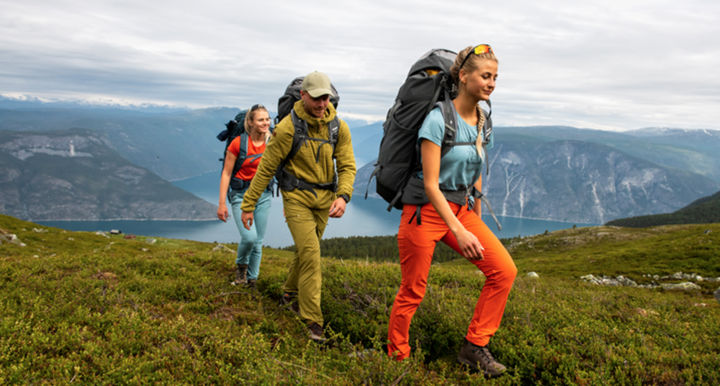
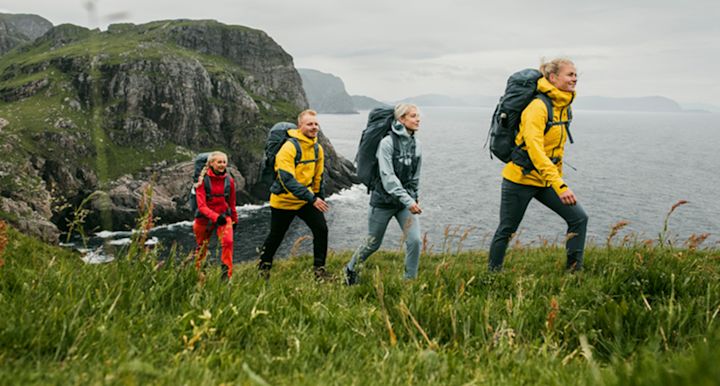
How big should my backpack be?
Depending on what you intend to use your backpack for, you will need different amounts of volume. What kind of gadgets you should pack in, what kind of person you are (light or heavy packer), how long you should be away and what time of year it is also matters. In winter, the gadgets are always more volume-intensive, so then you have to add a few extra liters. If you are also a parent and will need to carry some of the children's luggage, more space is also required. The recommendations below can serve as a thumbrule.
Weekdays and day trips: 20-35 liters
Overnight, weekend & cabin stays: 35-50 liters
Backpacking: 45-65 liters
Weekly tours with tent: 60-90 liters
It is best if you get all the packing in your backpack and do not have to attach anything on the outside. Then it will be easier to distribute the weight, pack correctly and get the backpack to fit well. Choose the volume of the backpack taking into account the times you will use it the most. A backpack is always at its best when it is well filled. If you are compressing the bag, remember to compress the bottom first, before you put in your stuff. You then avoid getting all the gadgets at the bottom, which means that the weight distribution will be wrong and the backpack will feel heavy.

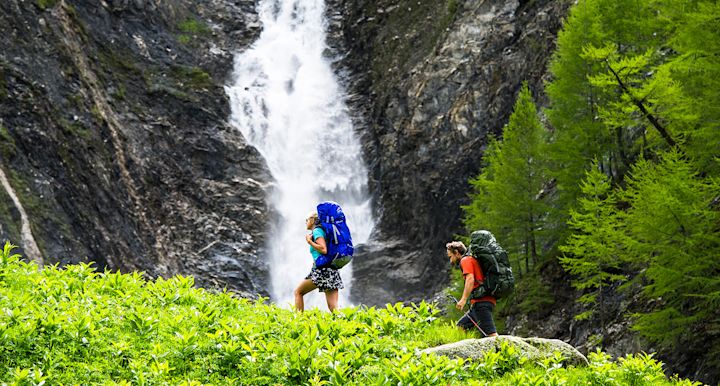
What type of backpack should I choose?
Today, there are unlimited backpack models to choose from, which both makes it easier for you, but can also cause problems. It may then be good that you think about what functions and details you want your backpack to have.
Openings and lids
Front, top and/or bottom feed? Cylinder head or roll closure? The options how to access your packing are many. Front-loading backpacks are a favorite of some. You can easily access your luggage and can easily take out a gadget that is far down in your backpack. On most larger hiking backpacks, there is also a bottom compartment with a separate opening, which is often referred to as a "sleeping bag compartment". The bottom compartment can almost always be separated from the main compartment by a partition wall. Since you probably pick up your sleeping bag and other sleeping gear every night, this compartment is handy because you can collect everything in one place.
A top cover serves as an additional pocket and on many models you can turn the cover into a waist bag. Practical if, for example, you are going to do a summit tour and only need to bring the most necessary with you. If the cylinder head is also floating, i.e. height adjustable, you have access to an extra space under the cover. The advantage of roll closing and fewer opening options on your bag is that you get a denser bag with fewer weak points.
Should I choose a waterproof backpack or not?
It mainly depends on the area of use and what you are going to store in the backpack. If you keep a computer in your everyday backpack, a waterproof variant may be optimal for you. The waterproof variants are usually slightly sturdier in the fabric, which also makes them more durable. On Outnorth's website you can filter out everyday backpacks that are waterproof or water repellent.
When it comes to hiking backpacks, these don't have to be completely waterproof. You can find hiking backpacks that are made from completely waterproof materials, but they are usually more expensive or have fewer features. It's easy to keep the stuff in your backpack dry anyway with the help of an external rain cover and/or waterproof packing bags.
Hip belt and carrying system
Then there is the issue of lap belts. On larger backpacks, we believe that it is quite necessary, at least if you want to carry safely, comfortably and correctly. On the smaller variants, a so-called hip strap can often suffice, as you will not carry as heavy anyway. Many models also have a removable or stowable lap belt, which can be an advantage if you often travel with your backpack or want to wear it in everyday life and still never snap the belt. For backpackers, a larger backpack with a stowable carrying system is preferable. Easy to just hide away when you are leaving with the bus, train, taxi or plane. You also don't have to buy a flight bag.
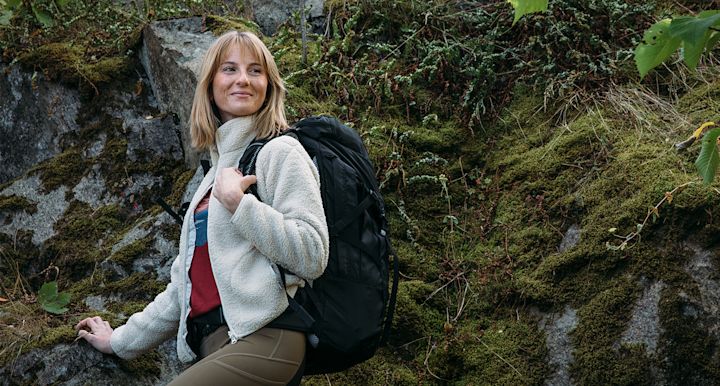
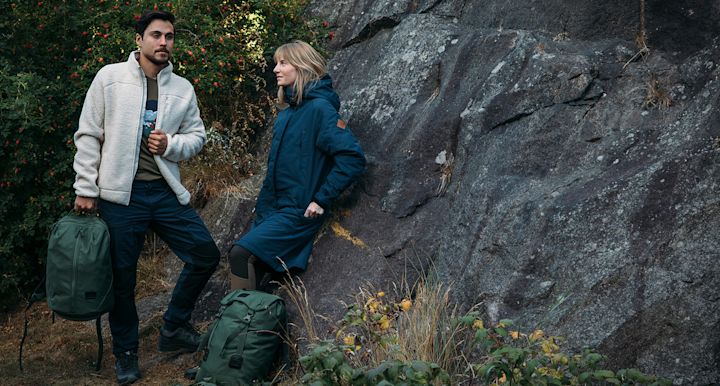
Light packer?
If you are going to carry lighter packing, it is wise to consider going for a backpack that does not weigh so much in its own weight. Grams can quickly turn into kilograms. However, most lightweight backpacks have a recommended maximum load that is good to relate to. Please check it before choosing a backpack. Many times, the carrying system is not as structured and stable as on a heavier and more substantial variant. In addition, all the details and features are a little weaker on a lightweight backpack, so treat the backpack accordingly.
Women's backpacks
Today, there are many women's backpacks that are adapted for women. They are often slightly shorter in back length and have a carrying system that is shaped according to the female body shapes. Slightly narrower between the shoulders, shoulder straps that are cut, so that they do not end up over the bust and a hip belt that is angled. Are you a short and slim guy and have a hard time finding a unisex backpack that fits? Then a women's model can be an option.
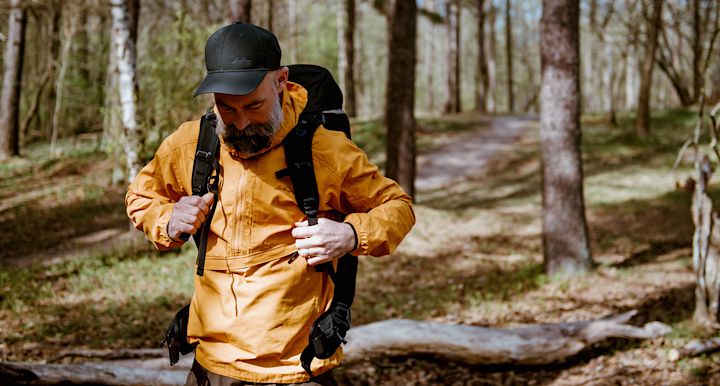
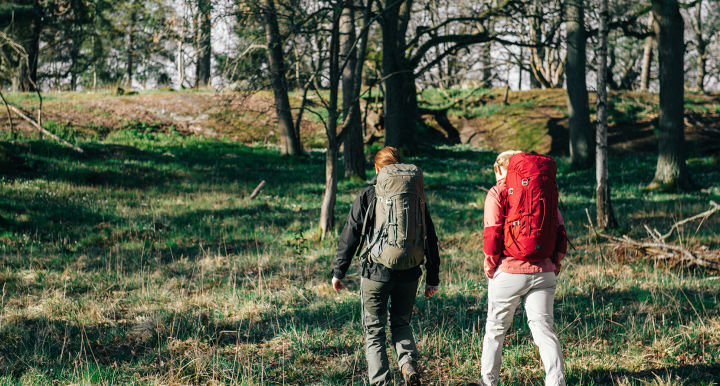
Back length and fit
All bodies are different and therefore not every backpack fits optimally on everyone. On many models, however, you can adjust the back length or choose different lengths. The back length measurement itself may differ slightly from each manufacturer, so it is important that you measure your back length to get a backpack that fits.
Measure your back length
Get a tape measure and ask someone to help you with the measurement. Locate the small protrusion on the neck, vertebra C7, and begin the measurement there. Then place your hands at the waist level of the iliac crest with your thumbs pointing in towards your spine. Then measure the distance from C7, along your spine, down to the intended line formed between your thumbs.
Some backpacks also have adjustable and replaceable hip belts. To find the right size there, just wrap the tape measure around your waist at the level of the iliac crest.
Pack correctly
- Semi-heavy things are packed at the top, e.g. camera and toilet gadgets
- Heavy things should be packed as close to your back as possible, e.g. tent, stove and food
- Light gadgets such as clothes are put in the front
- Bulky and lightweight gadgets such as sleeping bags are placed at the bottom